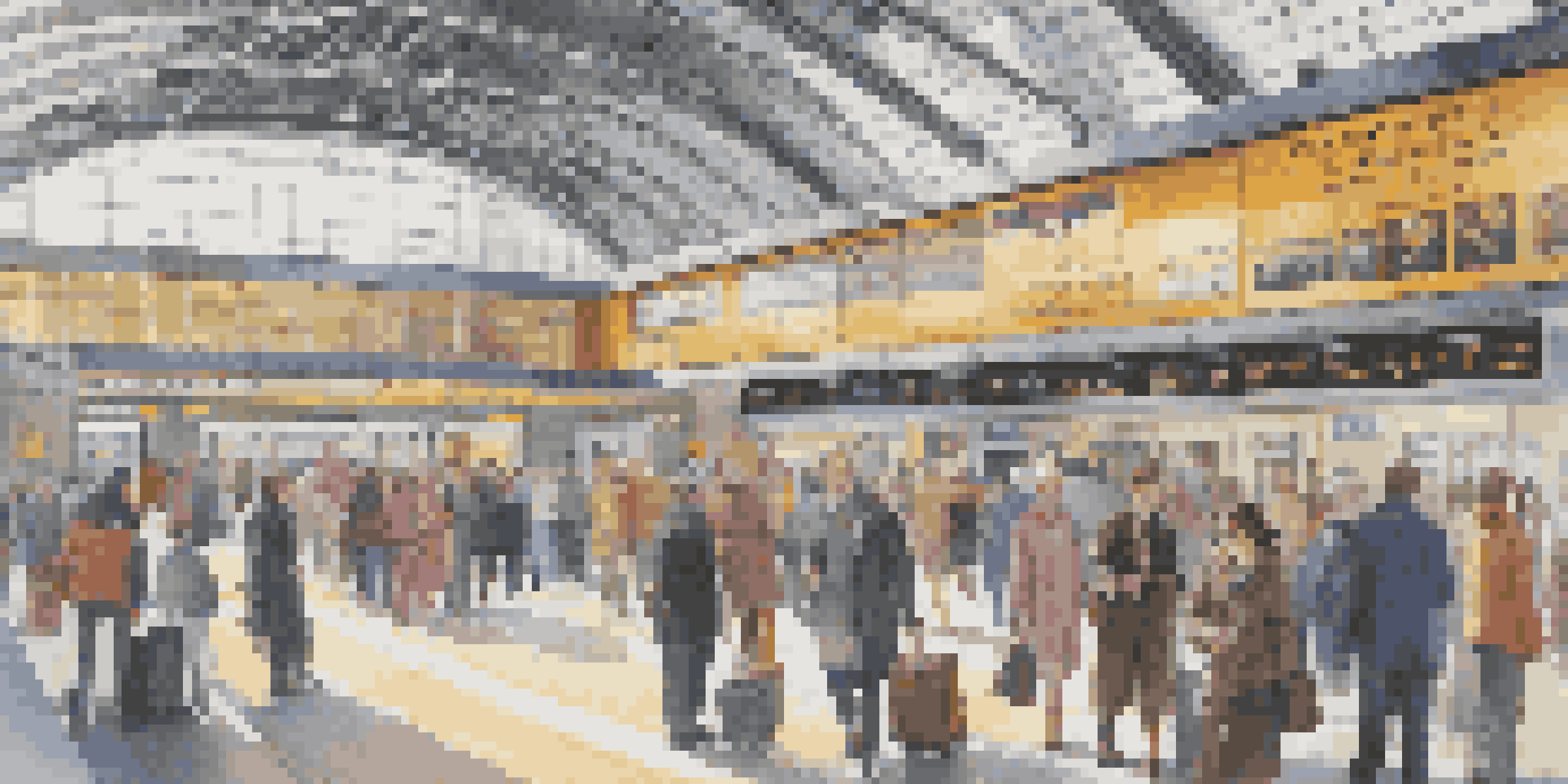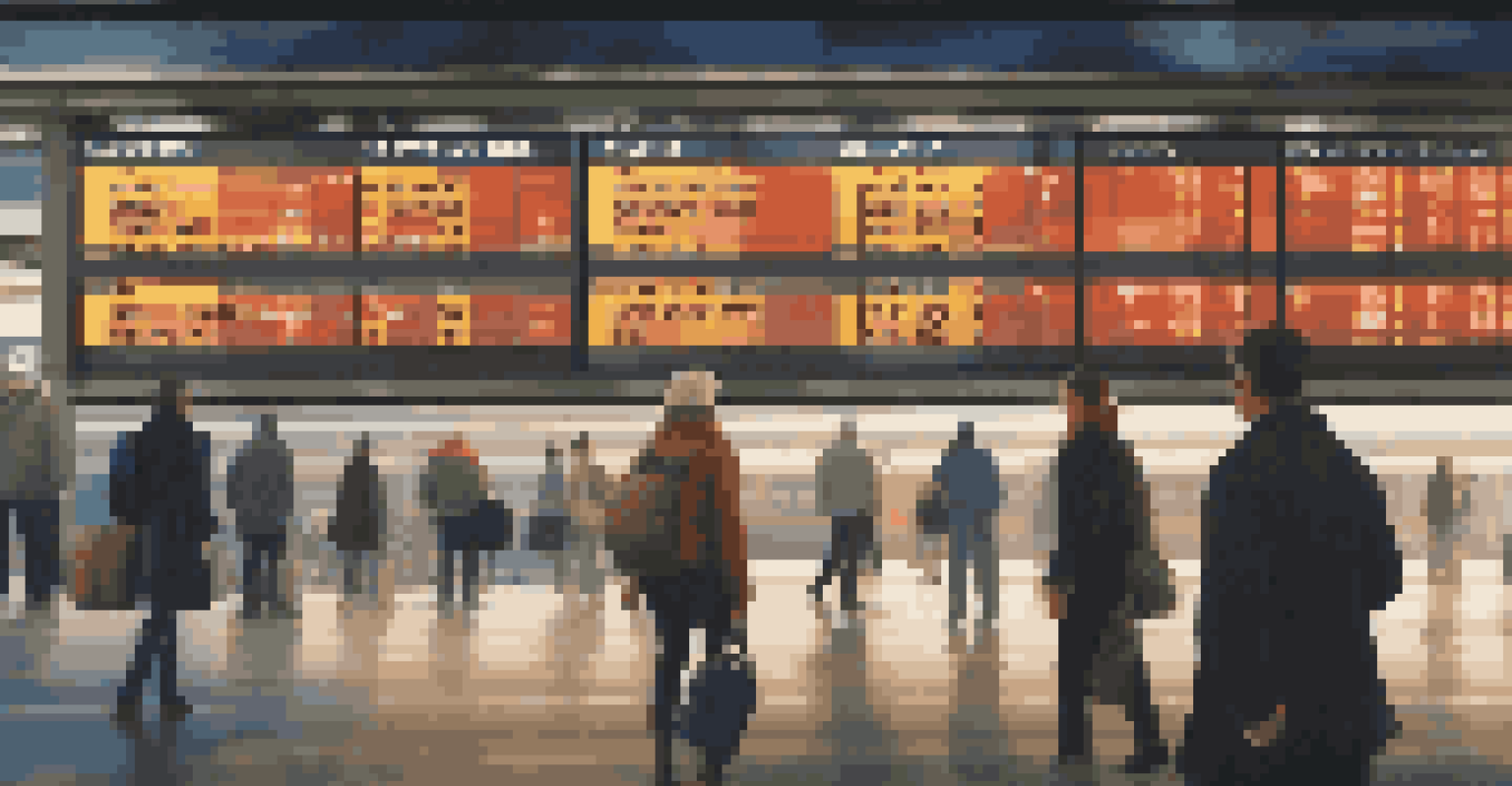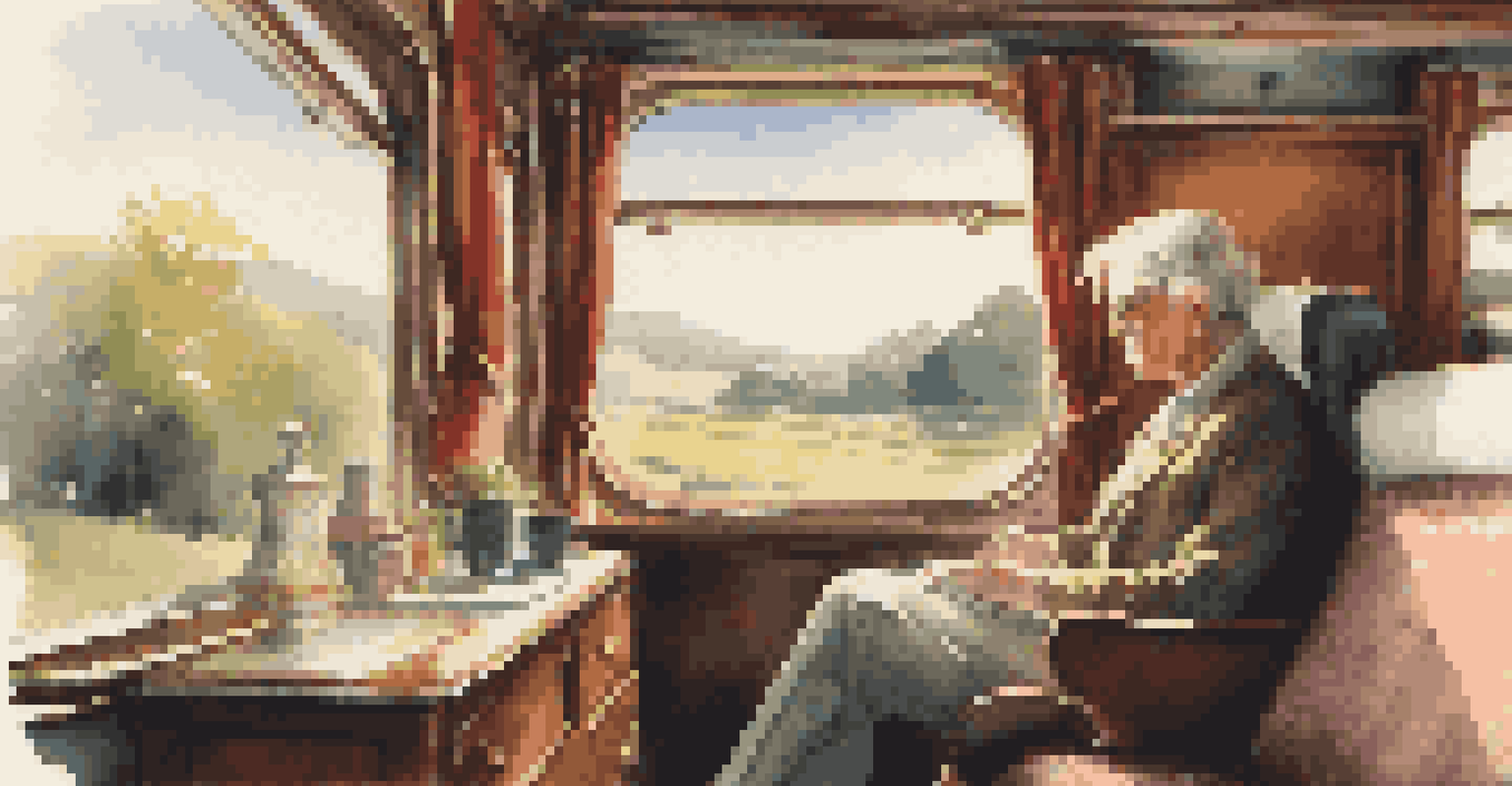Navigating Train Stations: A Beginner's Guide

Understanding Train Station Layouts for Easy Navigation
Train stations can seem overwhelming at first, but understanding their layout can make your journey smoother. Most stations are designed with clear signage to guide you through various areas like ticketing, waiting, and boarding. Familiarizing yourself with common zones, such as platforms and concourses, can help you feel more at ease.
Traveling by train is like seeing the world through a moving window. It gives you a chance to pause and appreciate the journey, not just the destination.
Picture a train station like a small city; each section has its purpose, and knowing where to find things is essential. For instance, you’ll usually find ticket counters near the entrance, while platforms are typically located further inside. The more you explore, the better you'll grasp the flow of the station.
Keep an eye out for information boards that provide real-time updates on train schedules and platform changes. These boards are your best friends when navigating a busy station. If you find yourself lost, don’t hesitate to ask staff for directions—they’re usually happy to help!
Buying Tickets: Methods and Tips for Beginners
Purchasing tickets can be one of the first hurdles when navigating a train station. Many stations offer various methods, including ticket machines, counters, and mobile apps. Understanding these options can save you time and prevent stress, especially during busy travel periods.

For first-timers, ticket machines may seem intimidating, but they are often user-friendly. Just follow the on-screen instructions, choose your destination, and pay using cash or card. If you prefer face-to-face interaction, head to the ticket counter, where staff can assist you in finding the best fare and route.
Navigate Train Stations with Ease
Understanding train station layouts and signage can significantly enhance your travel experience.
Remember to check if you need to validate your ticket before boarding. In some regions, a validated ticket is essential for traveling, while others allow you to board directly. Always read the instructions provided or ask for clarification to avoid any surprises.
Mastering the Art of Reading Train Schedules
Interpreting train schedules can feel like deciphering a foreign language at first. However, once you understand the basics, it becomes much easier. Train schedules typically display departure times, platform numbers, and destinations, often in a straightforward format.
The journey not the arrival matters.
To read a schedule, start by locating your train's destination and the corresponding time. Pay attention to whether the train is delayed, as this information is usually highlighted. Familiarizing yourself with common abbreviations can also speed up your understanding.
Don’t forget to check the schedule for return trains, especially if you're planning a day trip. Having a clear idea of your return time allows you to enjoy your outing without the stress of last-minute rushing.
Finding Your Platform: Tips for Smooth Transitions
Once you have your ticket and understand the schedule, the next step is finding your platform. Most train stations have clear signs indicating platform numbers, but they can sometimes be crowded. Keeping your eyes peeled for overhead displays or electronic boards can help lead you in the right direction.
Consider arriving at the station a bit earlier than necessary. This gives you ample time to navigate through the crowds and locate your platform without feeling rushed. Plus, arriving early can allow you to enjoy a coffee or snack while you wait.
Master Ticket Purchasing Tips
Familiarizing yourself with various ticket purchasing methods can save time and reduce stress.
If you're traveling with luggage, be mindful of your surroundings as you move towards your platform. Be courteous to fellow travelers, and make sure your bags are within reach, so you can board quickly when your train arrives.
Understanding Train Etiquette: Do's and Don'ts
Train etiquette is essential for ensuring a pleasant experience for everyone. Simple rules, such as offering your seat to those in need or keeping conversations at a reasonable volume, can make a significant difference. Being aware of your surroundings and respecting fellow passengers contributes to a harmonious travel environment.
Avoid blocking aisles with your luggage, as this can hinder others from moving around the train. Instead, utilize overhead storage or designated luggage areas. Also, remember to keep your belongings close to you, ensuring they don’t become a tripping hazard for others.
If you’re traveling during peak hours, be patient, as trains can get crowded. Standing and holding onto a rail is often necessary, so prepare yourself for a close-knit experience. A bit of kindness goes a long way in these situations!
Safety First: Tips for Staying Secure at Train Stations
Safety should always be a priority when navigating train stations. Keep your belongings secure by using zippers and keeping bags close to you. Be particularly vigilant in crowded areas, where pickpockets may take advantage of distractions.
Familiarize yourself with emergency exits and procedures as soon as you arrive. Knowing where to go in case of an emergency can give you peace of mind during your travels. Additionally, don't hesitate to report any suspicious activity to station staff.
Prioritize Safety During Travel
Staying aware of your surroundings and securing your belongings is essential for a safe train journey.
When waiting for your train, choose a well-lit area with other passengers around. This not only enhances your safety but also makes the wait feel less daunting. Trust your instincts; if something doesn’t feel right, don’t hesitate to move to a different location.
Making the Most of Your Train Journey Experience
Once you've mastered navigating the station, it's time to enjoy the journey itself! Train travel can be a delightful experience, offering scenic views and a unique perspective of the landscape. Take a moment to relax and soak in the sights as the train glides along its route.
Consider bringing along a book, podcast, or playlist to make your journey even more enjoyable. Engaging in your favorite pastime can help pass the time and enhance your travel experience. Additionally, don’t shy away from striking up a conversation with fellow passengers; you never know what interesting stories they might share.

Lastly, always keep your next destination in mind. Whether it's a bustling city or a quiet countryside, getting excited about the adventures that await can turn any train journey into a memorable experience.